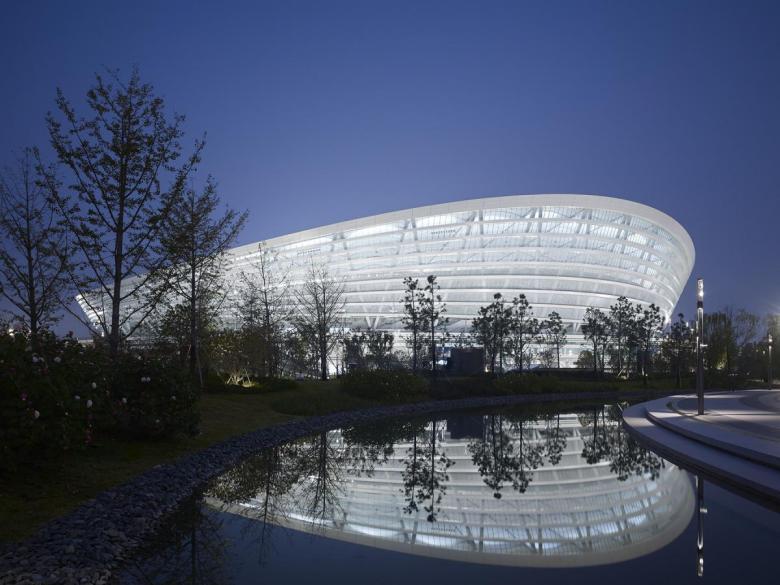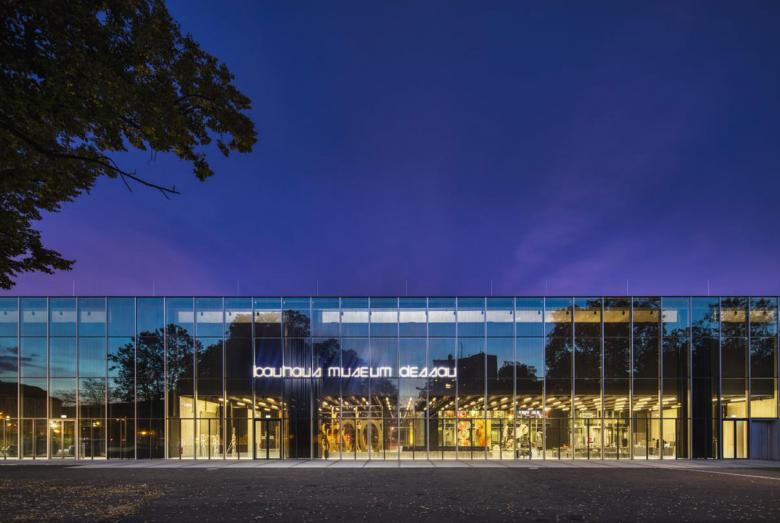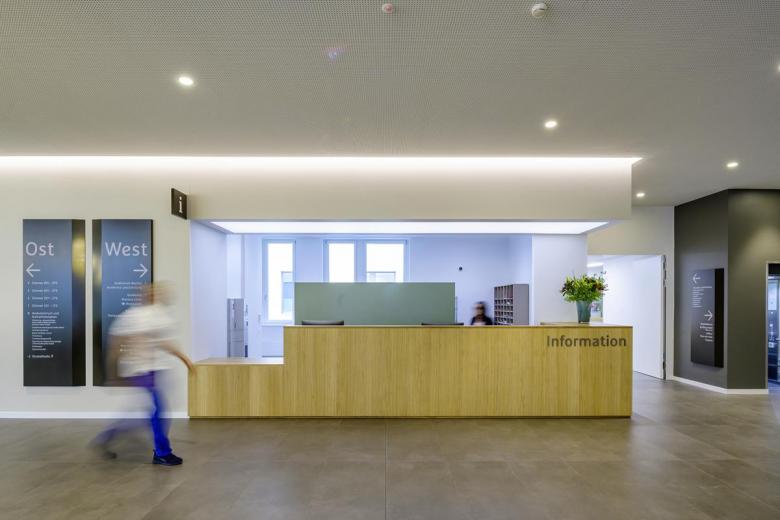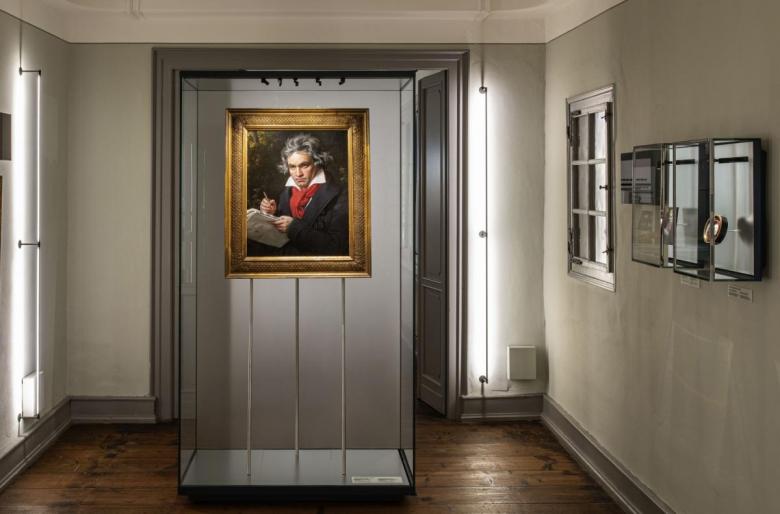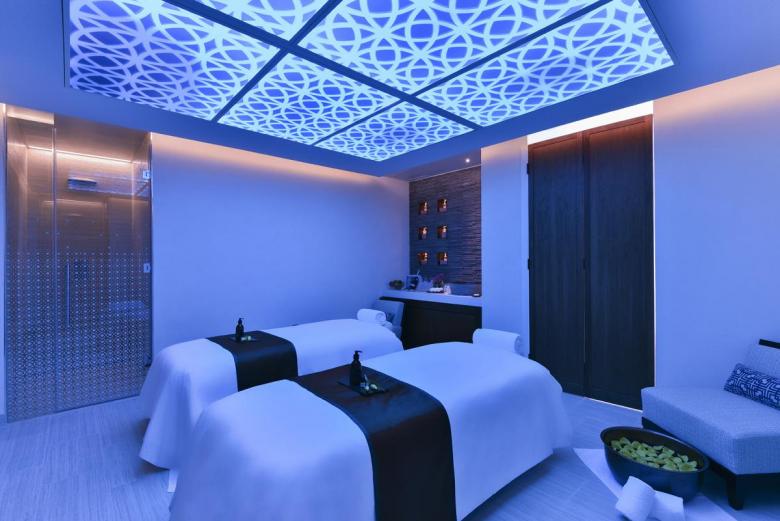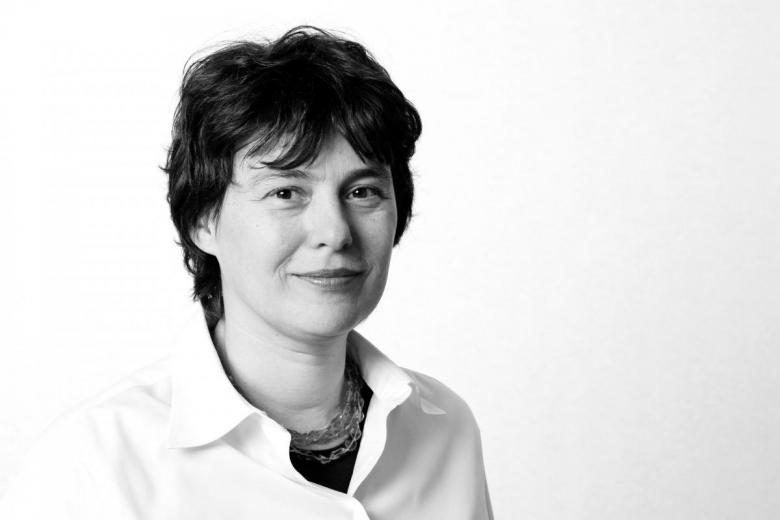Light in context
Martina Metzner
9. 2月 2020
Light is the key element that makes the Suzhou Olympic Center by GMP architects an icon. (Photo: Christian Gahl)
Be it for a museum, a workplace or a cruise ship—lighting designer Carla Wilkins from Lichtvision Design is looking for new solutions regarding control and customization at Light + Building. Martina Metzner spoke with the lighting designer about regional lighting cultures and colored LEDs, among other things.
»Control and customization of light is a very big issue.«You design lighting concepts for many building typologies. Does everyone in your team do everything does each of them have a focal area?
We do not have explicit teams, but we use the synergies of our 40 employees from 15 nations. What we do for the cruise ship also benefits the shopping center and vice versa. When we founded the office in 1997, our focus was on museum and administrative buildings. Then we gradually expanded our spectrum. In 2012 we opened our office in Hong Kong and have also been active in the Asian market since. Shortly afterwards, we added our branch office in London, from where we manage projects in the Middle East and elsewhere. Once a week we team up in a web conference.
As a lighting planner, you naturally need the technical lighting expertise to handle the respective tools. Experience teaches us that the best tool is not always the right one. This is where I see the responsibility that we lighting designers have. Who are we planning for? We use our design intelligence for long-term solutions. We are looking for a modern solution, combined with the genius loci. However, lighting design is based above all on the excellent cooperation between clients, users, architects and engineers.
Lichtvision Design has conceived the architectural lighting of the new Bauhaus Museum, planned by addenda architects. (Photo: Zumtobel, Faruk Pinjo)
You have accompanied some outstanding projects to their completion. From your perspective, which ones are particularly formative for the work of Lichtvision?Planning Terminal 4 of Changi Airport in Singapore was certainly a milestone project. This also encouraged us to open the office in Hong Kong. Other airports are in the making—unfortunately we can't go into more detail. From London, we worked together with seven other architects to complete phases 2 and 3 of the Downtown Doha urban development project. Last but not least, we are particularly proud of the fact that we have been working on a project like the extension and refurbishment of the Pergamon Museum in Berlin, based on plans by Oswald Mathias Ungers, since 2008 together with the team of Jan Kleihues, Walter Noebel and BAL. It is something special to accompany a project that maintains a high quality of execution even after so many years. Last year we were very happy to develop the architectural lighting design for the new Bauhaus Museum in Dessau. Previously, the new Bauhaus Museum in Weimar was opened, and we planned its exhibition area. Last year there also was a third anniversary project we were involved in: the permanent exhibition at Beethoven's birthplace in Bonn.
Lighting concept for the Felix Platter Hospital in Basel by BAM Swiss. (Photo: Frank Blümler)
You work in Europe, but also internationally, in Russia, the Middle East, China or India. To what extent do you have to engage with the respective local lighting culture?On the whole, there is a common global lighting culture, which differs above all in terms of the experiences we have with daylight and winter darkness. When it comes to artificial light, it has more to do with personal experience. In the planning process, daylight must be considered very early on in a project, a fundamental discussion with the architects is necessary. It's very much about geometry and cubature. Planning artificial lighting is much more part of the construction planning. In principle, both approaches should be combined.
We therefore always prefer to be involved in the project very early on. A good example is the Museion in Bolzano, for which we planned daylight, artificial light and visual media. Since light is of particular importance in museum construction – incorrect light can actually damage cultural assets—, lighting designers are traditionally involved at a very early stage. In the meantime, however, the light factor is also attributed a much higher significance in other areas – in hotels, gastronomy, retail or for workspaces.
The working environment and the ways of working have changed massively. The computer workstation, which was special in the 1990s, is now trivial. Human Centric Lighting in its various interpretations, in other words the individual adjustment of the color light temperature and illumination intensities at the workplace, has already emerged in connection with the fluorescent lamp. Now the technology is being refined. Dimming is becoming more and more standard, and luminaires are increasingly linked with sensors. The challenge lies in the interconnectivity of the various sensors and systems. We need a new standard, in addition to DALI also for Bluetooth control.
Since September 2019, the permanent exhibition in Beethoven's birthplace in Bonn is again open to visitors—with a lighting concept by Lichtvision Design. (Photo: David Ertl)
Has the classic desk lamp become obsolete?The fundamental issue here is the space required, which is limited by additional furniture on the table. Therefore, the discussion is about the economics of the workplace. Today, instead of the table lamp, the floor lamp is used at the workplace, which creates a personalizable workplace situation.
The consortium Zhaga provides a standard for LED boards, which some manufacturers have already adopted. The EU now stipulates that after use, luminaires should be dismountable into individual components for recycling. The initial euphoria about the new illuminant LED has led to its establishment. Today the discussion about the interface to the user and the control system is the next important threshold. At that point we have to focus more on the human scale; this must not be an academic exercise.
Part of the Doha urban development project was the artificial lighting design for the Al Wadi Hotel of the Accor chain. (Photo: Accor)
Are there any topics in lighting design that you are currently interested in and which you will be looking for at Light + Building?The subject of light control and personalization is a very big issue. Light and health remain important. We will pay more attention to the integration of light into an overall context. We will also have to deal more closely with materials in order to avoid unnecessary LED scrap and to comply with new EU regulations.
The consortium Zhaga provides a standard for LED boards, which some manufacturers have already adopted. The EU now stipulates that after use, luminaires should be dismountable into individual components for recycling. The initial euphoria about the new illuminant LED has led to its establishment. Today the discussion about the interface to the user and the control system is the next important threshold. At that point we have to focus more on the human scale; this must not be an academic exercise.
Carla Wilkins | LICHTVISION DESIGN, Berlin (DE), Hongkong (CN), London (GB)
Carla Wilkins «spot on»
LICHTVISION DESIGN, Berlin (DE), Honkong (CN), London (GB) | www.lichtvision.com
Sunday, March 8, 11:00-11:45 Talk + 11:45-13:00 Tour
Meeting Point: Outlook Lounge Hall 4.2 | Foyer
Talk + Tour in english language
> Information and Registration
Carla Wilkins
Based in Berlin Carla Wilkins has over thirty years professional experience as an independent Architectural Lighting Designer. In 1997 Ms. Wilkins was one of the founding partners of Lichtvision where she continues working to expand the traditional boundaries of lighting design to encompass all manner of visual experience. Over the years Ms. Wilkins has worked on a vast array of German and international projects. In Lichtvision she overviews the Concept and Design Department and enhancing the design synergies of all three Lichtvision offices Berlin, Hong Kong and London. Her work has been widely published and she frequently lectures on lighting design and related topics. Carla Wilkins has a degree (Dipl.-Ing.) in architecture and is an active Professional Member of International Lighting Designer's Association and Board Member Werkbund Berlin.
The Light + Building 2020 experience
‘Connecting. Pioneering. Fascinating’. Such is the tagline of the upcoming Light + Building in Frankfurt am Main, providing the central theme that runs through this leading world trade fair, to be launched from 08 to 13 March 2020. All the market leaders have signed up and currently some 2,700 exhibitors are expected, who will be presenting their world firsts in the fields of lighting, electrical and electronic engineering, home and building automation and security technology.
Centre stage at Light + Building will be some of the major drivers in the sector: topics such as ‘Smart Urban’ and ‘Functional Aesthetics in Lighting and Luminaire Design’. ‘Smart Urban’ encompasses topics relating to intelligent infrastructure in urban districts. At the same time, a key element in this headline theme is the interlinking of home and work, as the smallest unit of space that people inhabit in their private and working lives, on the one hand, and the city as the largest unit on the other. This includes digital charging infrastructure to provide for e-mobility and dynamic street lighting, as well as surveillance networks and intelligent parking systems.
A key area in the ‘Lighting’ product group is the presentation of the latest trends in design and technology on the lighting market. Digitalisation in the lighting sector continues to throw the focus ever more closely on human beings themselves and their individual needs. For that reason, too, ‘Functional Aesthetics’ is one of the beacon issues of the current season. This is all about the deliberate avoidance of ornamental design features and a focus on the specific requirements for lighting in each individual case. Subtly designed lamps, which emit variable light spectra for various, different scenarios – controlled, in part, by the smart building itself, are increasingly being employed in educational, work and leisure contexts.
> www.light-building.com
World-Architects is Content-Partner of Messe Frankfurt / Translated by Bianca Murphy
